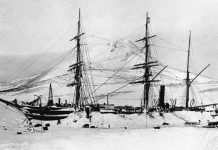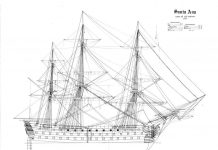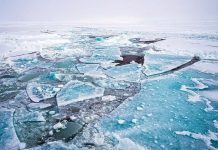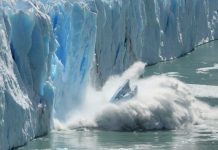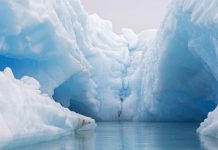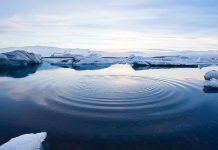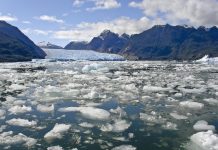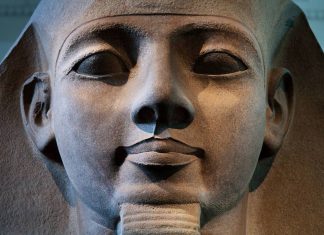He was 21 years old when Roald began to learn the basics of maritime affairs. In just a couple of years he managed to go from cabin boy to navigator, and in 1897 he was already going on his first expedition to the South Pole. The Belgian polar explorer Adrien de Gerlache is recommended by Fridtjof Nansen himself. Roald is appointed first mate of the expedition vessel Belgica.
Near the island of Peter I, the ship fell into an ice trap due to the inexperience of the leader. Wintering in the ice began, which turned out to be very difficult for the ship’s crew. Scurvy crippled almost all the participants of the expedition, people lost heart, and that’s when Roald Amundsen’s outstanding qualities as a leader, his ability to take control of the most difficult situation, manifested themselves. Together with the doctor Frederick Cook, he did everything to ensure that this expedition ended without losses.
All the knowledge about the polar latitudes that Amundsen absorbed like a sponge while reading the books of seasoned travelers came in handy. He organizes hunting for seals and penguins, warm clothes are made from their skins, meat is used to feed people. Roald’s confidence in the successful end of the winter, his knowledge and enthusiasm gave hope to other members of the expedition. In March 1899, Belgica managed to break free from the ice, Roald returned to Oslo with invaluable experience gained in such difficult conditions of polar wintering. He felt that the time had come for independent action, he was impatient to follow in the footsteps of Franklin and go through the Northwest Passage.
Meteorology and oceanology, conducting magnetic observations, driving a dog sled — he studied all this before leading his ship in a way still unknown to anyone. Amundsen said: “Any person does not know so much, and every new skill can be useful to him.”
He was going to follow in Franklin’s footsteps and do what this famous man failed to do. How much does a strong and cohesive team consisting of strong-minded and experienced knowledgeable people mean in the harsh conditions of the polar latitudes. “Nothing justifies itself more than the time spent on the selection of participants in a polar expedition,” he said. Amundsen picked up a polar explorer, the descriptions of whose journey he read in his youth. The intention to get from the Atlantic through the Northwest Passage to the Pacific Ocean after so many unsuccessful and tragic attempts, and even on such an uncomplicated vessel, seemed like a reckless adventure, but not for Amundsen. For three whole years he had been preparing for this trip and thought through everything to the smallest detail.
From the experience of wintering on the Belgica, Roald knew reliable people on whom he could rely in any event.
On June 16, 1903, the Ioa left Norway, with six other people on board besides Amundsen. The vessel boldly plunged into the labyrinth between the Arctic islands of northern Canada and moved in it until the ice blocked its way. Roald and his companions took this stop calmly, they were ready for it. The polar explorers set up their winter camp, where they had to spend many days in the conditions of the Arctic night. They had enough food, warm clothes, weapons and everything necessary to survive in high latitudes.
Amundsen learned a lot from the Eskimos, the indigenous inhabitants of these places, most of whom saw white people for the first time. Roald built an igloo with them, harvested iemmi-kan, and learned how to handle riding huskies. He bought reindeer fur jackets and bear mittens from them for the members of his expedition. In his opinion, the Eskimos were “courageous children of nature”, but they also had their drawbacks.
“They offered me a lot of women very cheaply,” Amundsen later wrote. Fearing for the moral climate in the expedition and the fact that one of its members would not be able to resist the temptation, Amundsen strictly forbade agreeing to such proposals.
True, his assumption that “syphilis must be very common in this tribe” had a much more effective influence on restraint in this matter.
While Amundsen and his companions were visiting the Eskimos, many already believed that the expedition of the desperate Norwegian had died in the ice. When in August 1905 it became possible to go further west, the Ioa found itself in an area not yet mapped. And now the travelers saw the vast expanse of water of the Gulf of the Sea (now it bears the name of Amundsen), their hearts beat in joyful anticipation. And for good reason — it was the bay of the Beaufort Sea, already on August 26 they met a schooner that was sailing from San Francisco. Her captain visited the “Ioa” and, having learned that Captain Amundsen was in front of him, warmly congratulated the Norwegian. There was something to congratulate him on — the Northwest Passage was conquered!
However, the ship had to winter again. During the wintering period, Amundsen, with the help of Eskimos on skis and sleds, reached Eagle City, where there was a telegraph office. He specially overcame about 8oo km to telegraph to Norway: “The Northwest Passage has been overcome.” Alas, the local telegraph operator turned out to be a smart guy, he realized the sensationality of this news and reported it to the American press earlier than to Amundsen’s homeland. Perhaps the efficient telegraph operator earned a penny on this, but the Steering Wheel lost a lot because of his enterprise. The fact is that he had a contract with partners in Norway for the rights to the first publication of this sensational message. Due to the leak of information, Amundsen was left without the agreed rather large fee and became a bankrupt hero, over whom the debts made during the organization of the expedition hung.
More than three years have passed since the expedition sailed, and in November 1906 Amundsen returned to Oslo. The dream of his youth came true: he was greeted no worse than Fridtjof Nansen once, he became a real national hero. His financial problems were also solved: Amundsen received a bonus of 40 thousand crowns from the government and paid his debts.



















